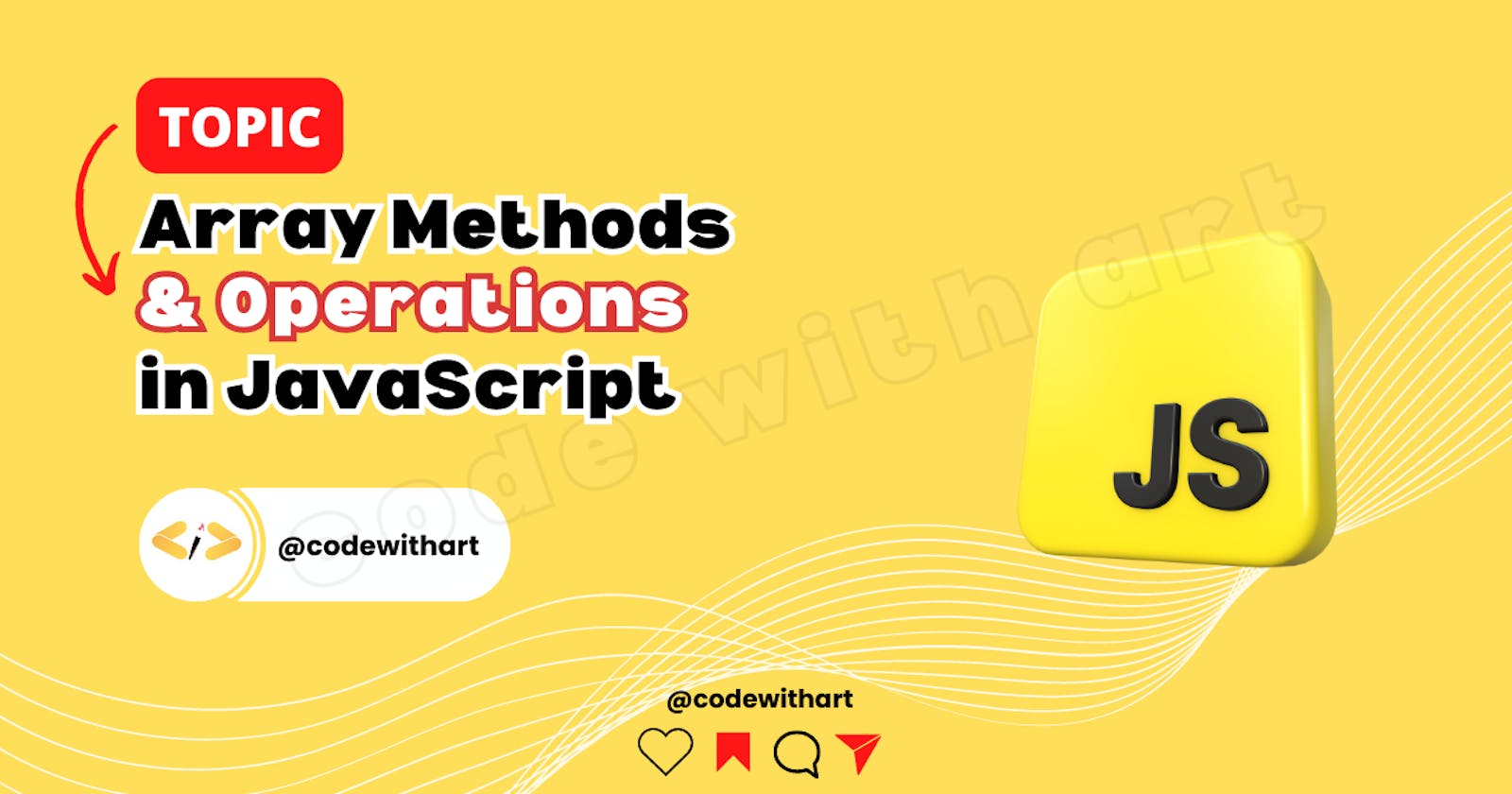Exploring Array Methods and Operations in JavaScript: Unlocking the Power of Arrays 🔥
Welcome, young adventurer, to the exciting world of arrays in JavaScript!In this blog article, we'll go in-depth with arrays, looking at their methods, operations, types, and definitions. Arrays are important data structures in JavaScript because they allow us to store and manipulate collections of items. By the end of this article, you'll have a firm grasp of how arrays function and how to use their power in your code. Let's get the fun started!
Definition:
A variable that may store numerous values is known as an array. It is a set of items organized in a certain sequence.
Types of Array:
JavaScript supports four main types of arrays:
1. Single-dimensional arrays:
The most common sort of array is a single-dimensional array, also referred to as a one-dimensional array. It maintains a collection of elements in a linear form, with an index for each member. The index values of the items are used to access them.
// Single-dimensional array
let fruits = ["apple", "banana", "orange"];
2. Multi-dimensional arrays:
A multi-dimensional array is made up of other arrays as its elements. This results in a matrix-like structure with various layers of indexing for accessing individual items.
// Multi-dimensional array
let matrix = [[1, 2, 3], [4, 5, 6], [7, 8, 9]];
3. Associative arrays:
Objects in JavaScript may be used to simulate associative arrays. To access and store values, these arrays employ keys rather than numerical indexes. Each key-value pair represents an array element.
// Associative array using an object
let person = {
name: "codewithart",
age: 30,
occupation: "Developer"
};
4. Typed arrays:
Typed arrays are arrays that allow you to operate with a single data type, such as integers or floats. They offer a more memory-efficient method of manipulating binary data.
// Typed array
let buffer = new ArrayBuffer(8);
let intArray = new Int32Array(buffer);
Although JavaScript lacks built-in support for multi-dimensional arrays or associative arrays, the concept can be emulated using single-dimensional arrays or objects, respectively.
Array Methods:
Array methods are built-in functions allowing us to conduct different array operations. Here are some examples of widely used methods:
// Creating an array
let fruits = ["apple", "banana", "orange"];
// Adding elements to the end of the array
fruits.push("grape", "watermelon");
// Removing the last element from the array
fruits.pop();
// Removing the first element from the array
fruits.shift();
// Adding elements to the beginning of the array
fruits.unshift("kiwi", "mango");
// Extracting a portion of the array
let citrusFruits = fruits.slice(1, 3);
// Modifying the array by adding, removing, or replacing elements
fruits.splice(2, 1, "cherry");
Array Operations:
Array operations are the manipulations and transformations that are done on arrays. Let us look at some common operations:
// Accessing array elements
let firstFruit = fruits[0];
// Checking the length of an array
let fruitsCount = fruits.length;
// Iterating through array elements
fruits.forEach(function(fruit) {
console.log(fruit);
});
// Checking if an element exists in an array
let hasCherry = fruits.includes("cherry");
// Joining array elements into a string
let fruitsString = fruits.join(", ");
Arrays are powerful JavaScript tools that allow us to store, retrieve, and modify data collections. In this blog post, we looked at array definitions, array types, common array methods, and array operations. You may improve the usefulness and performance of your code by knowing array methods and operations. So, dive into the realm of arrays, let your imagination run wild, and use arrays to their maximum potential in your JavaScript projects!
Happy array exploring and coding!🚀👨💻
brackets [ ] and can have any type of value.